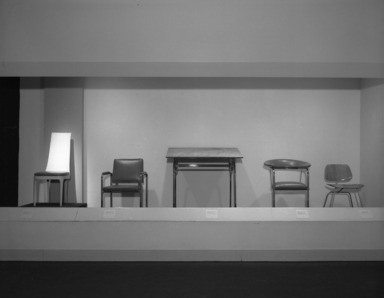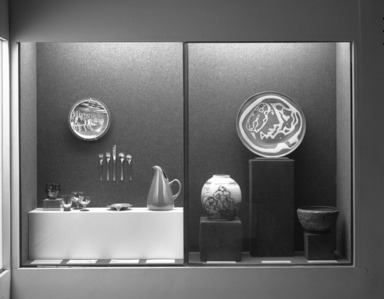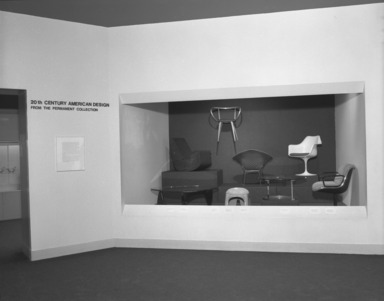

20th-Century American Design from the Permanent Collection, October 21, 1980 through March 22, 1981 (Image: PHO_E1980i018.jpg Brooklyn Museum photograph, 1980)
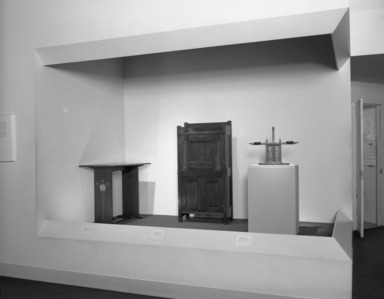
20th-Century American Design from the Permanent Collection, October 21, 1980 through March 22, 1981 (Image: PHO_E1980i019.jpg Brooklyn Museum photograph, 1980)
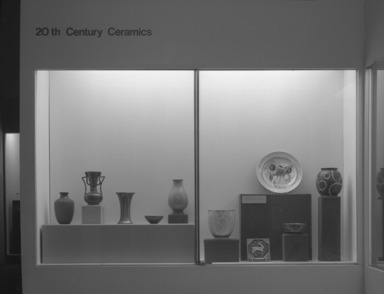
20th-Century American Design from the Permanent Collection, October 21, 1980 through March 22, 1981 (Image: PHO_E1980i020.jpg Brooklyn Museum photograph, 1980)
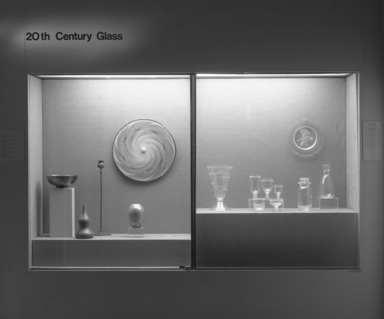
20th-Century American Design from the Permanent Collection, October 21, 1980 through March 22, 1981 (Image: PHO_E1980i021.jpg Brooklyn Museum photograph, 1980)
20th-Century American Design from the Permanent Collection
-
October 21, 1980
Twentieth-Century American Design: From the Permanent Collection will be on view at The Brooklyn Museum October 22, 1980 through February 8, 1981. The 50 objects include furniture, ceramics, glass, and metalwares dating from 1900 to the 1960s. Featured are such designers as Gustav Stickley, Isamu Noguchi, Eero Saarinen, Charles Eames, Hammond Kroll, Walter Dorwin Teague, and Russell Wright.
Curator of Decorative Arts Dianne Pilgrim says, “The underlying desire of much of the art of the 20th century has been to create new forms and materials totally unrelated to the past. Comfort, practicality, and simplified construction are some of the principal tenets. Up until the last ten years, emphasis has always been on the development of European modern design, the achievements of this country being ignored.”
The exhibition emphasizes the development of modern design in America. At the turn of the century designers Louis Comfort Tiffany and Gustav Stickley, architect Frank Lloyd Wright, and various Arts and Crafts groups were among those to advocate a return to honest craftsmanship while remaining independent of historic influence. The First World War, with its shattering of existing social and economic structures, brought about an era of experimentation and change, and an influx of new ideas from such immigrant designers as William Lescaze and Frederick Kiesler.
The most radical changes in the history of furniture design have occurred since 1920, when designers came to terms with
technology’s potential. They showed a preference for geometric forms and were influenced by modern art concepts featuring pure abstraction. Industrial designers such as Russell Wright, Walter Dorwin Teague, and Gilbert Rohde designed everything from furniture, interiors, glassware, ceramics, metalware, radios, and refrigerators to railroad trains and automobiles. They contributed practical ideas and functional innovation--stressing flexible, comfortable, well-constructed machine-made products.
During the 1940s more sculptural and organic forms were introduced by such designers as Frederick Kiesler, with his rocking chair made for Peggy Guggenheim’s gallery, Art of the 20th Century; Isamu Noguchi, who created free-form sculptural tables of wood and glass; and Harry Bertoia, who began in 1951 to design chairs and related furniture using welded steel rods.
There has been by no means a universal acceptance of modern styles. Traditional sentiments are still strong despite the changes in size and scale to accommodate present-day life-styles, dramatic new forms by Italian designers, innumerable types of plastics, a shortage of living space, and more informal living patterns. The exhibition reflects the variety and complexity of design and technique in the art of the 20th century.
Brooklyn Museum Archives. Records of the Department of Public Information. Press releases, 1971 - 1988. 1980, 030-31.
View Original
